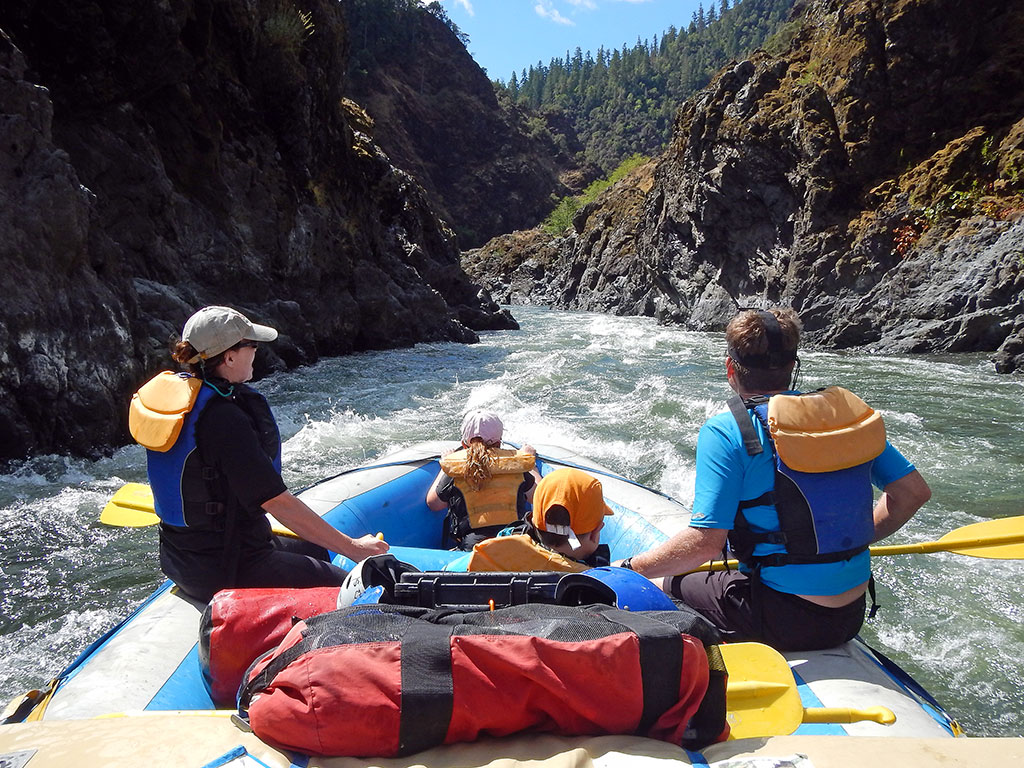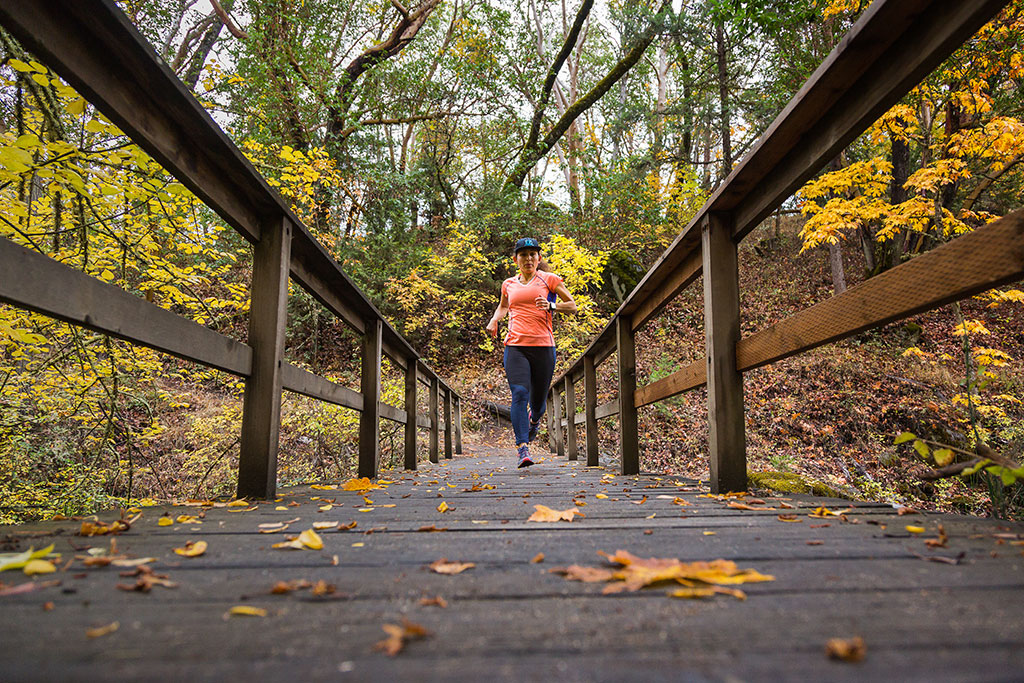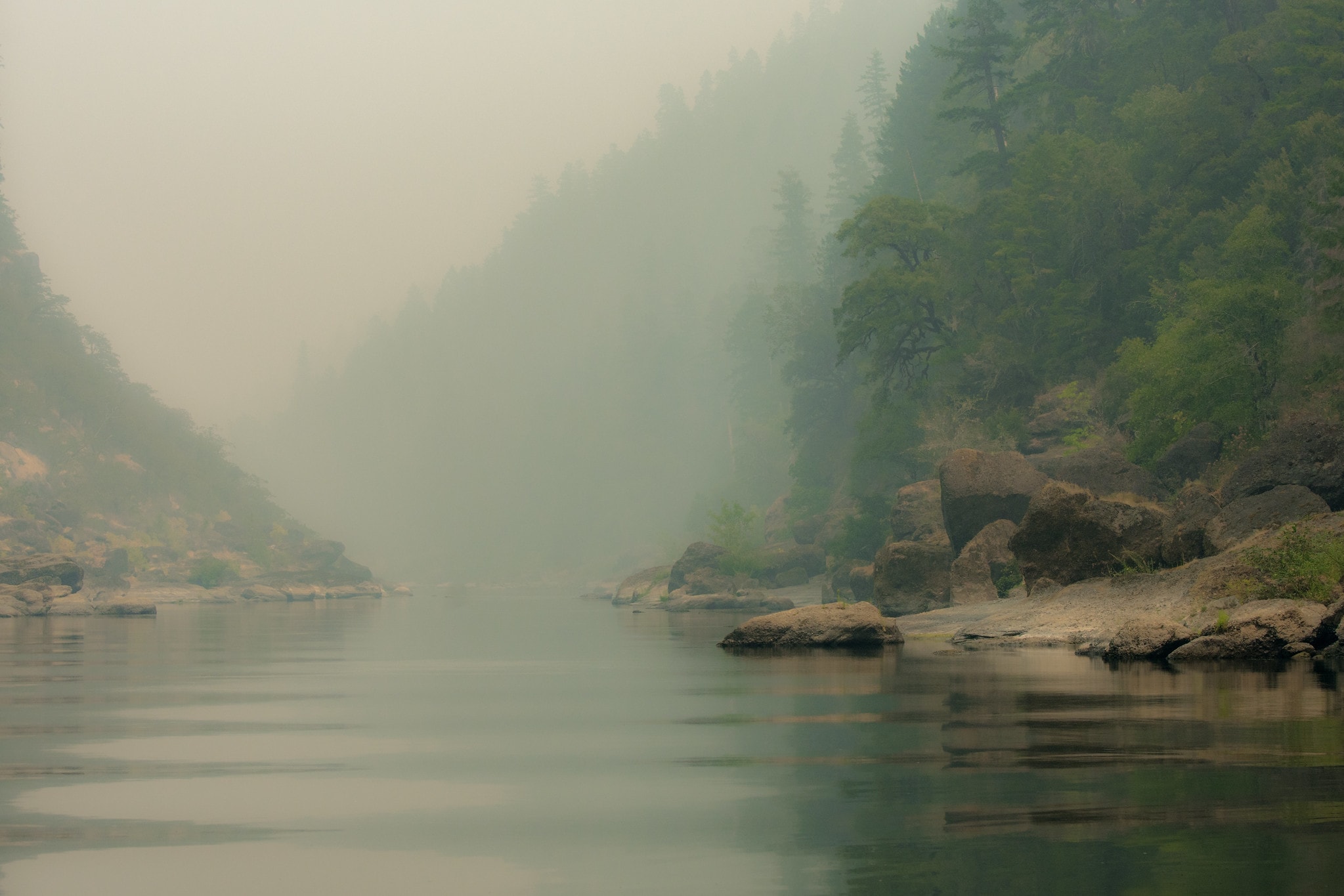Stretching from the northern edge of Crater Lake National Park to the Pacific Ocean, the 215-mile Rogue River serves as the lifeblood of the southern Oregon tourist economy, reliant on whitewater rafters, hikers and anglers each summer.
Brad Niva purchased Rogue Wilderness Adventures in 2006 and grew the company’s presence in that tourist economy, offering rafting, hiking and fishing trips on the river. At the height of the busy season each summer, Niva oversaw a staff of more than 100.
But Niva saw just how fragile that standing could be when, in July 2013, a string of lightning strikes caused at least 10 fires in the Rogue River-Siskiyou National Forest. The fires forced sections of the river to close for three weeks—ruining what should have been Rogue Wilderness Adventures’ busiest month of the year. With more than $100,000 in canceled reservations, Niva had to somehow refund deposits for thousands of rafters and take care of his staff. “We didn’t know our credit card machine had a limit on how many refunds you could do each day,” he said.
Compounding the angst, Niva knew he couldn’t count on those would-be clients to return at a later date. “You can’t say, ‘Come back in September,’” Niva said. “They’re coming out on vacation, kids are out of school and they can’t come back.”
The fires, along with the uncertainty of when the next one would spark, played a key role in Niva’s decision to ultimately sell Rogue Wilderness Adventures in 2015. “That threat of fire on our business was too great,” he said.
Climate change and wildfires impact tourism
Niva is now working to make sure other business owners don’t face a similar decision. He joined Travel Southern Oregon as executive director in 2017 and works to promote a region that spans the southern Oregon Coast, the Rogue River, Crater Lake and the Klamath Basin.

Wizard Island rises from the waters of Crater Lake. (Photo by Jak Wonderly and courtesy of Travel Southern Oregon)
He knows that wildfires—and the threat of lingering smoke each summer—aren’t going anywhere. And climate change stands to exacerbate the effects of fire: The National Oceanic and Atmospheric Administration projects that the area burned by wildfire, largely in the western United States, will at least double with every degree of warming in coming years. And the National Climate Assessment, released in 2018, predicts that wildfire smoke will, among other things, curtail outdoor recreation.
Those forecasts are forcing destination marketing organizations (DMOs), responsible for promoting regions and attracting tourists, to grapple with the question: How do you market a destination when that city or region is on fire or filled with smoke?
In Oregon, the question is anything but hypothetical: Wildfires burned 1.2 million acres in 2017, leading to a $51.1 million loss in visitor spending and a 65% increase in unhealthy air-quality readings compared to readings between 2000 and 2016, according to a 2018 report prepared for Travel Oregon, the state’s travel and tourism commission. Another study, conducted by the Southern Oregon University Research Center, found that Crater Lake National Park—Oregon’s only national park—had experienced a 14% drop in July and August visitations in 2018, due in part to wildfire and smoky conditions.
Nationwide, 58,000 wildfires burned more than 8.7 million acres last year. Perhaps the most famous example in recent history is California’s Camp Fire, which drew nationwide media coverage as it scorched more than 100,000 acres in just two days in northern California; eventually, the Camp Fire burned more than 150,000 acres in all, punctuating the state’s deadliest and most destructive wildfire season on record.
Just two months earlier, tourism officials had established the West Coast Tourism Recovery Coalition. The goal behind the coalition—featuring partners in California, Oregon and Washington—is to help would-be visitors make safe choices, keep them updated on the latest conditions and raise awareness of the many communities in each state that remain unaffected by wildfire.
“Visitors spend a combined $166 billion in our states, and travelers will cancel trips if they don’t have information to help them make a safe choice,” said Caroline Beteta, president and CEO of Visit California, in a statement announcing the coalition.
For Niva, his role with Travel Southern Oregon is to showcase one of the biggest outdoor recreation destinations in a state known for recreation: Oregon’s outdoor economy supports nearly 175,000 jobs and leads to more than $16 billion in annual consumer spending, according to the Outdoor Industry Association.
And even after selling Rogue Wilderness Adventures, Niva has lived through one wildfire after another in the region, including the National Creek Complex Fire, which in 2015 burned more than 20,000 acres in and around Crater Lake National Park and temporarily forced the closure of the park’s northern entrance, and the Chetco Bar Fire, which burned more than 190,000 acres near the Oregon Coast in 2017. Niva calls the constant angst of over wildfires, smoke inhalation and trail closures “the new normal.”
But he’s also helping small businesses throughout southern Oregon prepare for the worst and ensure tourists enjoy their stay, whenever they arrive.
One of Travel Southern Oregon’s major efforts has been promoting shoulder-season activities—that period of time, just before and after the bustling summer season, when crowds are smaller, occupancy rates are lower and temperatures are most pleasant.

Rafters paddle on the Rogue River. (Photo by Jak Wonderly and courtesy of Travel Southern Oregon)
But Niva knows that summer remains the busiest season throughout southern Oregon—outfitters can’t exactly offer jet boat tours and Rogue River rafting trips in November or December—so Travel Southern Oregon has also been developing a suite of online resources to keep visitors and businesses apprised of current wildfire and smoke conditions.
Travel Southern Oregon already hosts a webpage with tips and links to resources for planning around wildfire, including regional updates and links to official air-quality readings. It’s is also partnering with Apis, an air pollution monitoring company based in Grants Pass, Oregon, to install air-pollution sensors at some of the region’s most popular tourist attractions—including the Oregon Shakespeare Festival theaters in Ashland, the Wildlife Safari attraction in Winston and Crater Lake National Park. When the sensors go online, likely in late September, users can visit an online dashboard for real-time air-quality updates.
Niva hopes the new tool helps travelers make plans and, if necessary, pivot when their preferred destinations are inaccessible or unhealthy.
Regional DMOs expand outreach, target last-minute travelers
Other regional DMOs are taking steps to adapt to the new reality.
In Ashland, the long-running worries over wildfires and lingering smoke led more visitors to plan shoulder-season trips and book last-minute getaways this summer. “That perception of smoke, and the consumer confidence to book early, has been tested by the fires,” said Katharine Cato, director of Travel Ashland.
So, in August, Travel Ashland launched a social media campaign targeting would-be, spur-of-the-moment visitors based in Bend, Oregon, roughly three-and-a-half hours away. Cato said the idea was to create a sense of urgency and target visitors who might have been scared off by the potential for fire—and who would enjoy the region’s mountain bike trails, lakes and hiking opportunities. “Ashland is beautiful,” Cato explained. “There’s an outdoor draw, so we thought we could invite folks here for that reason.”

Lithia Park in Ashland (Photo by Jak Wonderly and courtesy of Travel Southern Oregon)
Cato said it’s too early to measure the success of the campaign, but that anecdotally, she’d heard of increased foot traffic at the area’s wineries and on nearby Mount Ashland this summer. It helps that southern Oregon has been largely free of wildfires and smoky air in 2019. “This year, the perception of smoke is stronger than the reality of smoke,” Cato said.
Beyond targeting the last-minute traveler, Cato said Travel Ashland will place a larger emphasis on the city’s year-round and off-season outdoor opportunities—like mountain biking, low-elevation hiking trails, golf courses, fall and springtime fishing, and more. And she’s quick to tout Smokewise, a website created in partnership with several local organizations that gathers current air-quality reports in Ashland, directions for properly wearing a respirator and resources for keeping tabs on current wildfires.
Small businesses try to stay nimble, diversify offerings
Even Mt. Ashland Ski Area, one of the region’s top ski destinations, finds itself grappling with the fallout from wildfires and lingering smoke.
A $2 million project to upgrade the lodge has been ongoing since 2017, and summertime is the area’s best opportunity for routine maintenance on buildings and chairlifts. So if wildfire smoke creates unsafe conditions, management has to send workers home—sans pay—when there isn’t work to be done indoors. “All of that can be impacted if you can’t be outdoors, and that’s something we’ve had to adapt to,” said Hiram Towle, general manager at Mt. Ashland Ski Area and chair of the Travel Ashland committee.
Towle also says traditional summertime events at Mt. Ashland Ski Area—weddings, group parties, long-distance runs, and mountain bike rides—are getting booked earlier and later in the summer to account for possible poor conditions. But even that remains an imperfect, inelegant solution: Sunshine and good weather is no sure thing for outdoor events in May, June or September.
Still, that hasn’t stopped Towle from trying to make the ski area a year-round destination. Several hiking trails (including the Pacific Crest Trail) traverse the slopes of Mount Ashland, and a new trail recently won approval from the U.S. Forest Service. When completed, the new path will ascend to near the summit of Mount Ashland, with a short spur trail leading to the 7,533-foot summit itself. There, hikers can peer into a glacial cirque and enjoy panoramic views of the surrounding Siskiyou Mountains. Towle says it’s ridiculous that there isn’t currently a named trail up to the summit. “So many people want that experience, and we’re proud that it came about,” he said.
Having seen wildfires torch large swaths of southern Oregon in recent years, Towle understands that attracting tourist dollars isn’t just about raising awareness, creating a web-based tool to track smoke levels or installing new trails. Sure, it’s going to take all of those tools—but it’s also going to demand that small businesses and tourism organizations alike rethink wildfire’s role in the tourism economy. “It’s up to our industry to make sure we can be nimble,” he said. “So we can take the crowds when they come—and lessen the economic impact when they don’t.”


